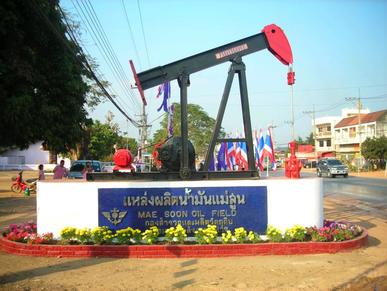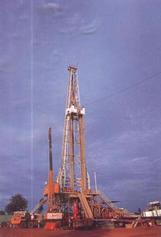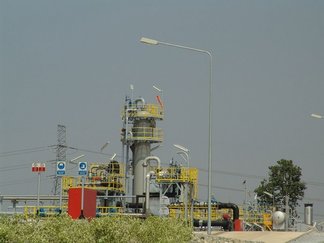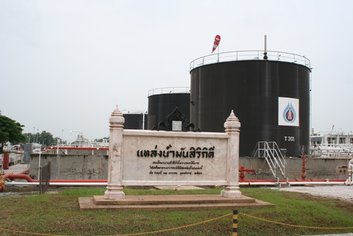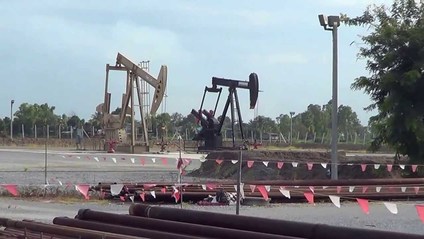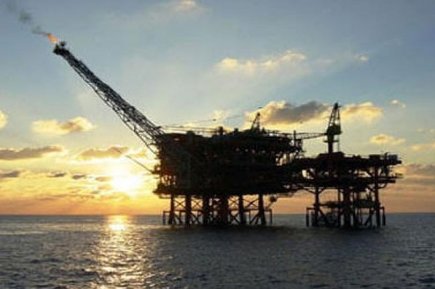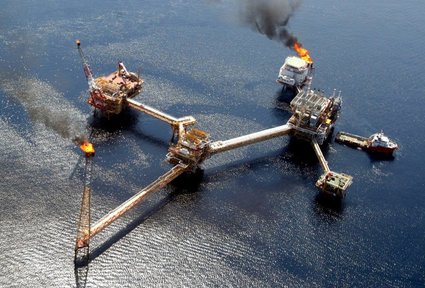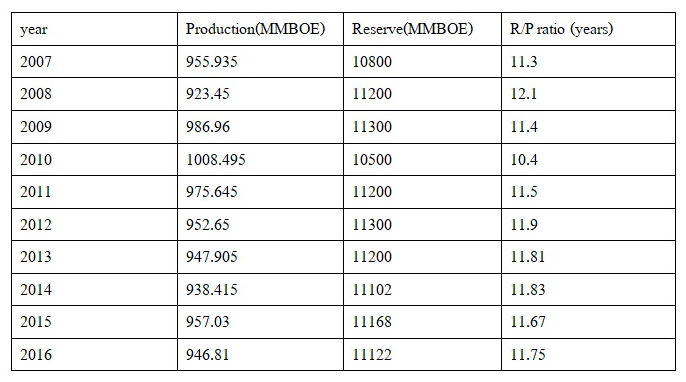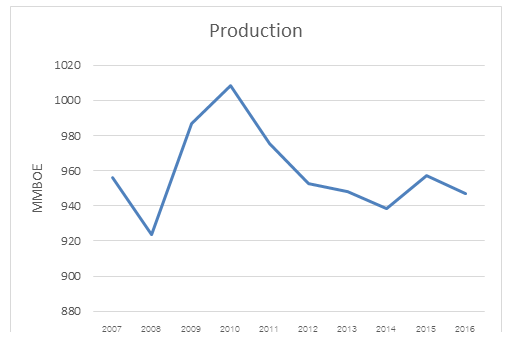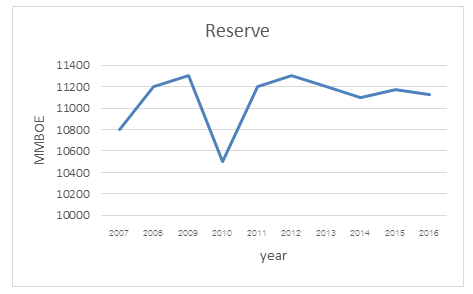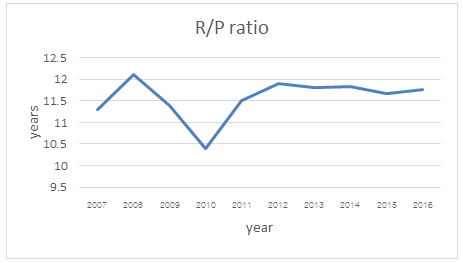Petroleum resources in Thailand
There are many petroleum fields in Thailand both onshore and offshore. including, 3 fields in Northeastern, 1 fields in Northern, 4 fields in central and 4 fields in gulf of Thailand with total production rate about 28,350 bbl/day and 596 MMscf/day
There are many petroleum fields in Thailand both onshore and offshore. including, 3 fields in Northeastern, 1 fields in Northern, 4 fields in central and 4 fields in gulf of Thailand with total production rate about 28,350 bbl/day and 596 MMscf/day
Northeastern
Nam Phong natural gas field in Khon Kaen province which has 4 production wells produce about 70 MMscf of natural gas/day Dong Moon natural gas field in Kalasin province 1 production well produce about 10 MMscf of natural gas per day
Phu Horm natural gas field in Udonthani 1 production well produce about 4 MMscf of natural gas per day
Central of Thailand
Sirikit oil gas field(S1) in Kumphaeng Phet which can produce crude oil 19,000 bbl/day and produce natural gas 45 MMscf/day
Bueng Ya oil field in Sukhothai province can produce crude oil about 450 bbl/day Uthong oil field in Suphanburi province and Kam phaeng Saen oil field in nakornsawan province which can produce totally about 900 bbl/day
Wi chian oil field in Petchabun province produce crude oil 200 bbl/day
Gulf of Thailand
Erawan natural gas field which have production rate about 100 MMscf/day of natural gas
Tantawan oil gas field which can produce crude oil about 3500 bbl/day and natural gas 57 MMbbl
Nang Nual oil field which can produce crude oil about 2900 bbl/day
Bongkot gas field which can produce natural gas about 310 MMscf/day and LNG about
International Oil Company in Thailand
Chevron
Predecessors
One of Chevron's early predecessors, Star Oil, discovered oil at the Pico Canyon Oilfield in the Santa Susana Mountains north of Los Angeles in 1876. The 25 barrels of oil per day well marked the discovery of the Newhall Field, and is considered by geophysicist Marius Vassiliou as the beginning of the modern oil industry in California.
Formation of the Chevron name
In 1911, the federal government broke Standard Oil into several pieces under the Sherman Antitrust Act. One of those pieces, Standard Oil Co. (California), went on to become Chevron. It became part of the "Seven Sisters", which dominated the world oil industry in the early 20th century. In 1926, the company changed its name to Standard Oil Co. of California (SOCAL).
The Chevron name came into use for some of its retail products in the 1930s. The name Calso was also used from 1946 to 1955 in states outside its native West Coast territory.
Operations
Upstream
Chevron's oil and gas exploration and production operations are primarily in the US, Australia, Nigeria, Angola, Kazakhstan, and the Gulf of Mexico. As of December 31, 2010, the company had 10.545 billion barrels (1.6765 billion cubic metres) of oil-equivalent net proved reserves. Daily production in 2010 was 2.763 million barrels per day (439.3 thousand cubic metres per day).
Downstream
Chevron's downstream operations manufacture and sell products such as fuels, lubricants, additives and petrochemicals. The company's most significant areas of operations are the west coast of North America, the U.S. Gulf Coast, Southeast Asia, South Korea, Australia and South Africa. In 2010, Chevron sold an average 3.1 million barrels per day (490×103 m3/d) of refined products like gasoline, diesel and jet fuel. The company operates approximately 19,550 retail sites in 84 countries. The company also has interests in 13 power generating assets in the United States and Asia and has gas stations in Western Canada. Chevron owns the trademark rights to Texaco and Caltex fuel and lubricant products.
Alternative energy
The Chevron's alternative energy operations include geothermal, solar, wind, biofuel, fuel cells, and hydrogen.
Chevron has claimed to be the world's largest producer of geothermal energy. The company's geothermal operations are primarily located in Southeast Asia.
Finance
For the fiscal year 2011, Chevron reported earnings of US$26.9 billion, with an annual revenue of US$257.3 billion, an increase of 23.3% over the previous fiscal cycle. Chevron's shares traded at over $105 per share, and its market capitalization was valued at over US$240 billion.
Headquarters.
Chevron Tower In Houston
Chevron's corporate headquarters are located in a 92-acre campus in San Ramon, California. The company moved there from its earlier headquarters at 555 Market Street in San Francisco, California, where it was located since its inception in 1879.[89] Chevron also operates from office towers in Houston, Texas, where it leased the 1500 Louisiana Street and 1400 Smith Street from former Texas energy giant Enron. Chevron is also planning a new office tower in downtown Houston next to its existing properties at 1600 Louisiana Street.[90] The building will stand 50-stories and 832 feet. Upon completion, it'll be the fourth tallest building in Houston and the first 50-story building constructed there in nearly 30 years.
reference
|
Picture reference
http://www.marinerthai.net/forum/index.php?topic=515.0 http://daily.bangkokbiznews.com/detail/203245 https://www.emaze.com/@AILCTITW/Presentation-Name https://www.youtube.com/watch?v=jXquWVYPvEs http://www.atom.rmutphysics.com/charud/oldnews/236/oil/30.htm http://info.dla.go.th/public/travel.do?cmd=goDetail&id=509481&random=1476193405910 |
|
written by
Napat Tangjaichuychat Teerapat Junnatasna editor by Hutsakarn Kamolpongsathorn |
